/98d5b87b-9f52-44a5-ae20-f7da9360b941.png)
Likert Scale Survey Analysis: Tips for Effective Regression Modelling
Review Rating Score
Conducting surveys using Likert scale is a common practice in various fields, ranging from market research to social sciences. To effectively analyze the data collected from a Likert scale survey, it is important to employ appropriate statistical techniques. At BizzLibrary.com, we understand the significance of analyzing Likert scale survey data accurately. That's why we offer a comprehensive guide on Likert Scale Survey Analysis, along with a downloadable PDF for your convenience.
Understanding Likert Scale
The Likert scale is a type of rating scale commonly used to measure attitudes, opinions, and perceptions of respondents. It consists of a series of statements or questions, each accompanied by a scale representing the degree of agreement or disagreement, typically ranging from "Strongly Disagree" to "Strongly Agree". Respondents are asked to indicate their level of agreement or disagreement by selecting the corresponding option.
Analyzing Likert Scale Survey Data
Once you have collected the data from your Likert scale survey, the next step is to analyze it to gain valuable insights. Here are some key considerations for analyzing Likert scale survey data:
- Data Preparation: Start by coding the responses, giving each response option a numerical value. This enables data transformation and statistical analysis.
- Descriptive Statistics: Calculate descriptive statistics to summarize the data, such as mean, median, mode, and standard deviation. These statistics provide a general overview of the responses.
- Frequency Distribution: Create frequency tables or charts to visualize the distribution of responses across various categories or rating options.
- Regression Analysis: Utilize regression analysis to examine the relationship between the Likert scale variables and other variables of interest. This can help identify significant predictors or factors affecting the responses.
- Type of Analysis: Depending on the research objectives and the nature of the data, you can employ different statistical techniques such as chi-square tests, t-tests, ANOVA, or correlation analysis to explore patterns and relationships.
Download your Likert Scale Survey Analysis PDF
Ready to dive into Likert Scale Survey Analysis? Visit BizzLibrary.com and download our comprehensive PDF guide to gain a deeper understanding of the subject. Our guide provides step-by-step instructions and expert tips to help you conduct an accurate and insightful analysis of your Likert scale survey data.
Don't miss out on this valuable resource! Visit BizzLibrary.com now and enhance your survey analysis skills. Empower your decision-making process with in-depth insights derived from Likert scale surveys.
Is the template content above helpful?
Thanks for letting us know!
Reviews
Dee Chen(8/13/2023) - DEU
Great document, and for free that is even greater
Venice Harmon(8/13/2023) - DEU
Just to tell you that I'm happy with the file received.
Last modified
Our Latest Blog
- A Guide to Make a Business Plan That Really Works
- The Importance of Vehicle Inspections in Rent-to-Own Car Agreements
- Setting Up Your E-mail Marketing for Your Business: The Blueprint to Skyrocketing Engagement and Sales
- The Power of Document Templates: Enhancing Efficiency and Streamlining Workflows
Template Tags
Need help?
We are standing by to assist you. Please keep in mind we are not licensed attorneys and cannot address any legal related questions.
-
Chat
Online - Email
Send a message
You May Also Like
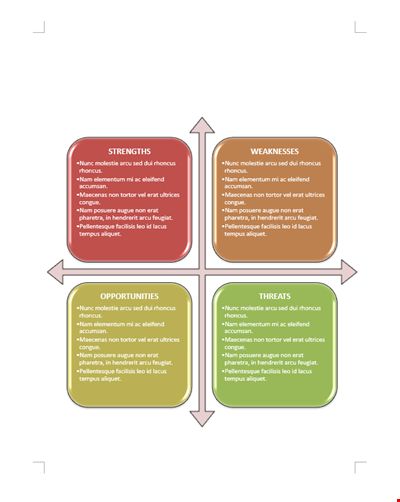
Business SWOT Analysis Template

Literary Analysis Essay Structure: HATMAT, Quote, Paragraph, Thesis Sentence
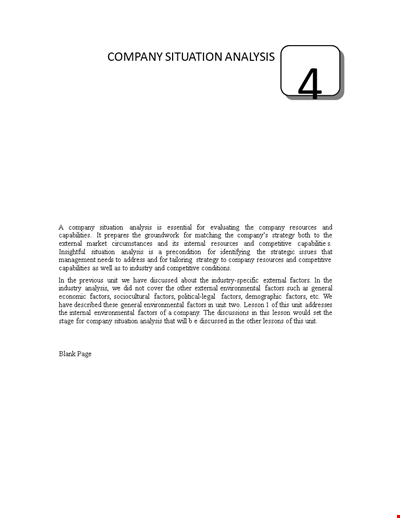
Company Situation Analysis Template - Conducting Internal and Competitive Analysis

Free Company Analysis Template - Improve Your Strategy, Analyze Stocks, and Drive Growth
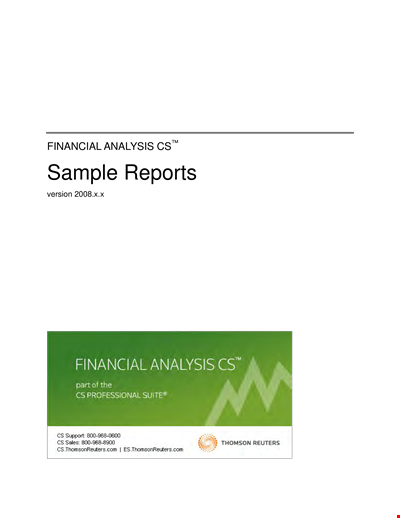
Financial Analysis Template for Company Sales, Group Assets, and Ratios | Competitor Analysis
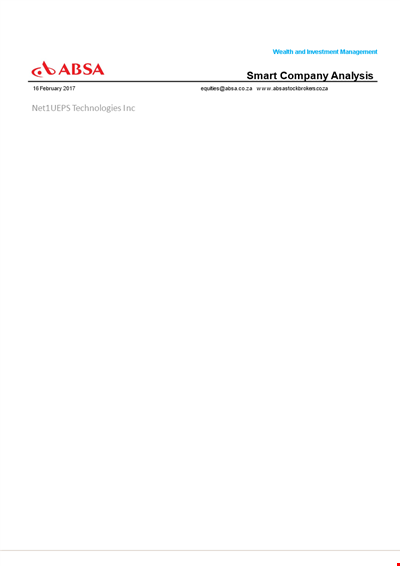
Smart Company Analysis Template - Improve your Financial Analysis with Intellidex
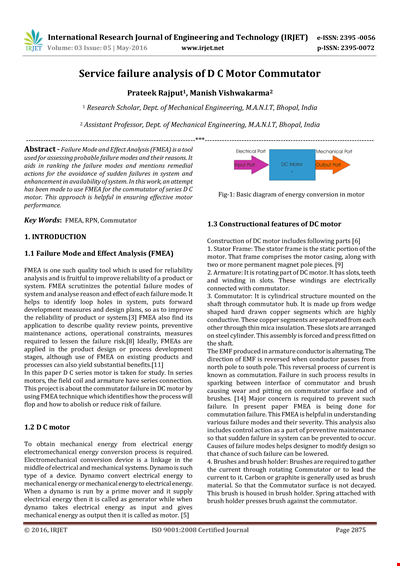
Service Failure Analysis Template - Analyzing System and Motor Failure with Commutator
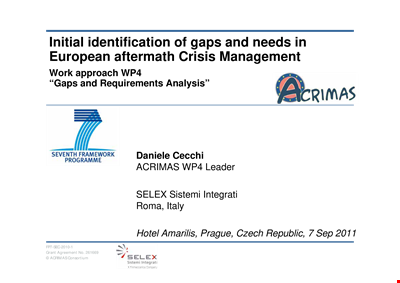
Gap Requirements Analysis Template - Acrimas Analysis
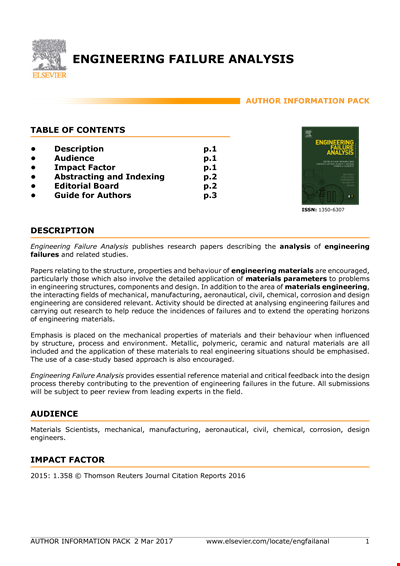
Engineering Failure Analysis Template
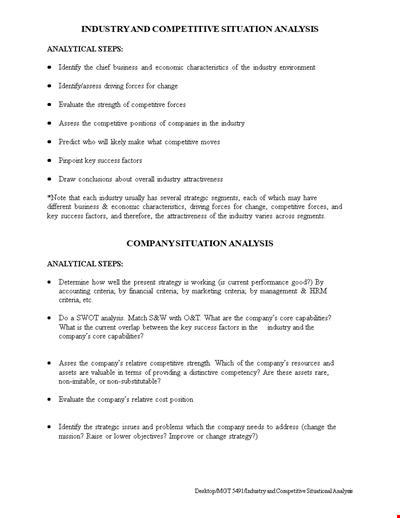
Industry & Competitive Situation Analysis

Vertical Financial Statement Analysis Example
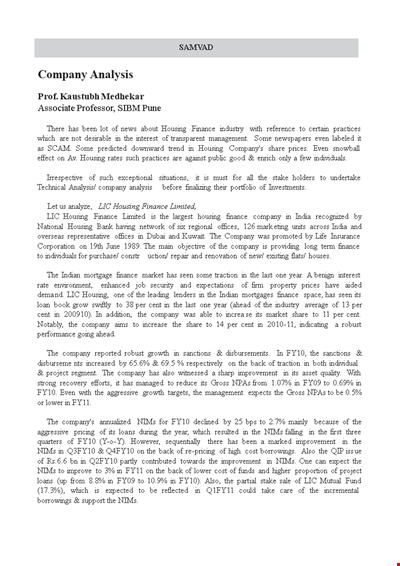
Simple Company Analysis Template

Market Analysis Template: Get Valuable Insights for Strategic Marketing
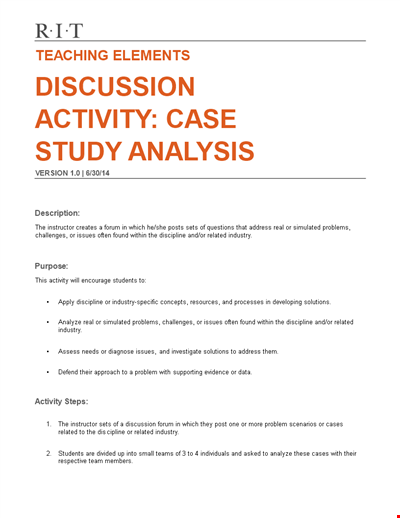
Simple Case Analysis Template | Identify Issues, Analyze Activity
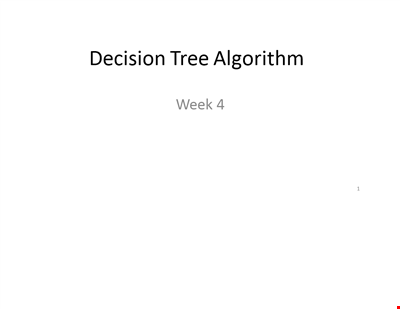
Decision Tree Algorithm Template - Efficiently Analyze Decision-Making Processes
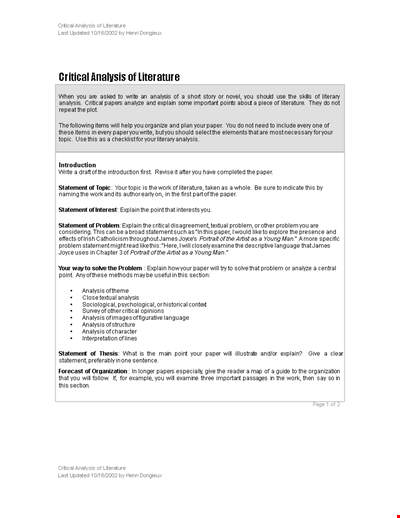
Critical Literary Analysis Template - Analyzing and Crafting a Strong Statement